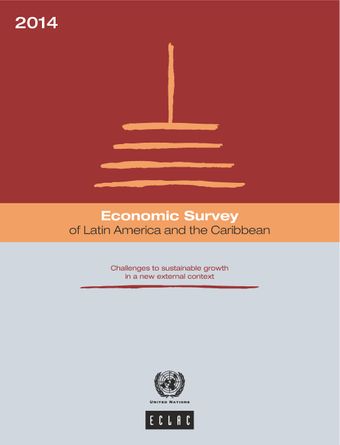Main medium-term features of the external scenario

- Author: United Nations
- Main Title: Economic Survey of Latin America and the Caribbean 2014 , pp 65-79
- Publication Date: February 2015
- DOI: https://doi.org/10.18356/53a68015-en
- Language: English Spanish
Between mid-2003 and the global financial crisis of 2008, the international economy operated in extraordinary circumstances that set the stage for steady growth in Latin America and the Caribbean, the likes of which had rarely been seen in the economic history of the region. The combination of a sustained level of activity in the developed economies and the emergence of influential new actors on the world stage, such as China and India, led not only to an increase in the volume of international trade to the benefit of the Latin American and Caribbean economies, but also to a steady rise in the prices of commodities, which are the main or among the main exports of the economies of South America. Although the countries of Central America and the Caribbean are, on the whole, net importers of commodities,1 they benefited from the favourable international economic situation through exports of maquila services and certain agricultural goods, increased foreign currency inflows in the form of remittances from emigrant workers in developed countries and significant tourist arrivals generally from the developed countries.
© United Nations
ISBN (PDF):
9789210565424
Book DOI:
https://doi.org/10.18356/a7ab36b8-en
Related Subject(s):
Economic and Social Development
Sustainable Development Goals:
-
From This Site
/content/books/9789210565424s004-c002dcterms_title,dcterms_subject,pub_keyword-contentType:Journal -contentType:Contributor -contentType:Concept -contentType:Institution105
/content/books/9789210565424s004-c002
dcterms_title,dcterms_subject,pub_keyword
-contentType:Journal -contentType:Contributor -contentType:Concept -contentType:Institution
10
5



